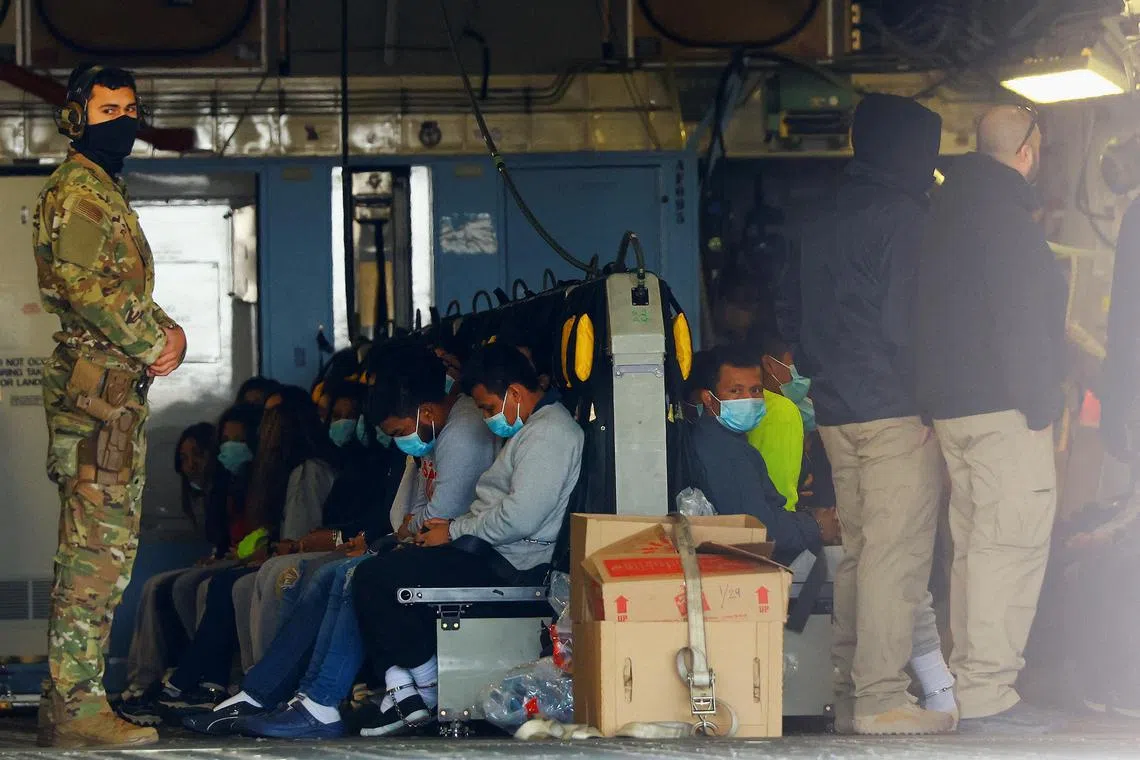USAid climate programmes aimed to curb migration. Now they’re gone
Sign up now: Get ST's newsletters delivered to your inbox

Migrants in shackles being expelled from the United States aboard a US Air Force plane at Fort Bliss military base, in El Paso, Texas, on Jan 30.
PHOTO: REUTERS
Follow topic:
NEW YORK - Two months ago, the Biden administration announced an initiative to share satellite data with Central American countries including Guatemala, Honduras and El Salvador to help them prepare for severe storms.
The goal was twofold. In a region vulnerable to hurricanes and other calamities made worse by a warming climate, reducing the damage would ease suffering. It would also relieve the pressure to migrate to the United States.
And at US$6.6 million (S$8.9 million), the project, run by the US Agency for International Development (USAid) and Nasa, cost a tiny fraction of what the federal government spends on border security.
That programme, along with a suite of other development projects designed to reduce the flow of people from Central America to the US border, now seems to be over.
The day he took office, President Donald Trump signed an order freezing USAid spending;
Later that day, a federal judge issued a limited, temporary order against Mr Trump’s moves to shutter the agency but rejected requests to restore funding for agency grants and contracts.
“USAid built a vast array of programmes to help families foresee and adjust to climate shocks without migrating,” said Professor Michael Clemens, a professor at George Mason University who was a senior adviser at the agency during the Biden administration.
Ending those programmes “leaves migration as the only viable way for many families in the Western Hemisphere region to cope”.
It’s not just storms that push people to move.
In a 2022 study, researchers from the Inter-American Development Bank found that extreme temperature events in El Salvador between 2009 and 2018 were strongly correlated with increased migration among people whose livelihoods rely on crops like corn.
They also found that when crops suffered, in parts of the country that had poor access to credit, people in agricultural households were more than three times as likely to migrate as those in regions with better access to credit.
“Our results suggest that despite the current anti-immigrant political climate, there should be a global responsibility relative to the consequences of climate change,” the authors wrote. NYTIMES

